
Author:
Oak Grove Ventures Research Team
Overview
As Web3 ecosystems and artificial intelligence (AI) technologies converge, the crypto payments space is undergoing a paradigm shift—from serving as a mere tool to becoming an ecosystem enabler. This report focuses on the frontier of “crypto payments + AI,” examining three case studies: Crossmint’s solution for Boba Guys, AEON’s crypto-native payment protocol for AI agents, and Gaia Network’s partnership with MoonPay. These examples reveal how technological integration is reshaping payment processes, user incentives, and ecosystem interaction models.
At the core of this synergy lies a new logic: AI endows payment systems with dynamic decision-making capabilities, while blockchain offers a trustworthy execution environment for AI agents. Together, they form a closed loop of “data on-chain → intelligent processing → value transfer.” According to MarketsandMarkets, the AI agent market is projected to grow from $5.1 billion in 2024 to $47.1 billion by 2030, with a compound annual growth rate (CAGR) of 44.8%. As the value carrier for AI, crypto payments are redefining user interaction paradigms in Web3, accelerating the digital transformation of traditional sectors through the engine of “cryptocurrency payments + AI-driven economic intelligence.”
The trend underscores how technological collaboration is breaking down barriers between on-chain and off-chain worlds, offering replicable transformation pathways for DeFi, retail, and other industries. Centered on the user, crypto payments link data value, while AI enables intelligent alignment between assets and behavior. The vision of a value internet is approaching a tipping point—from concept to large-scale application.
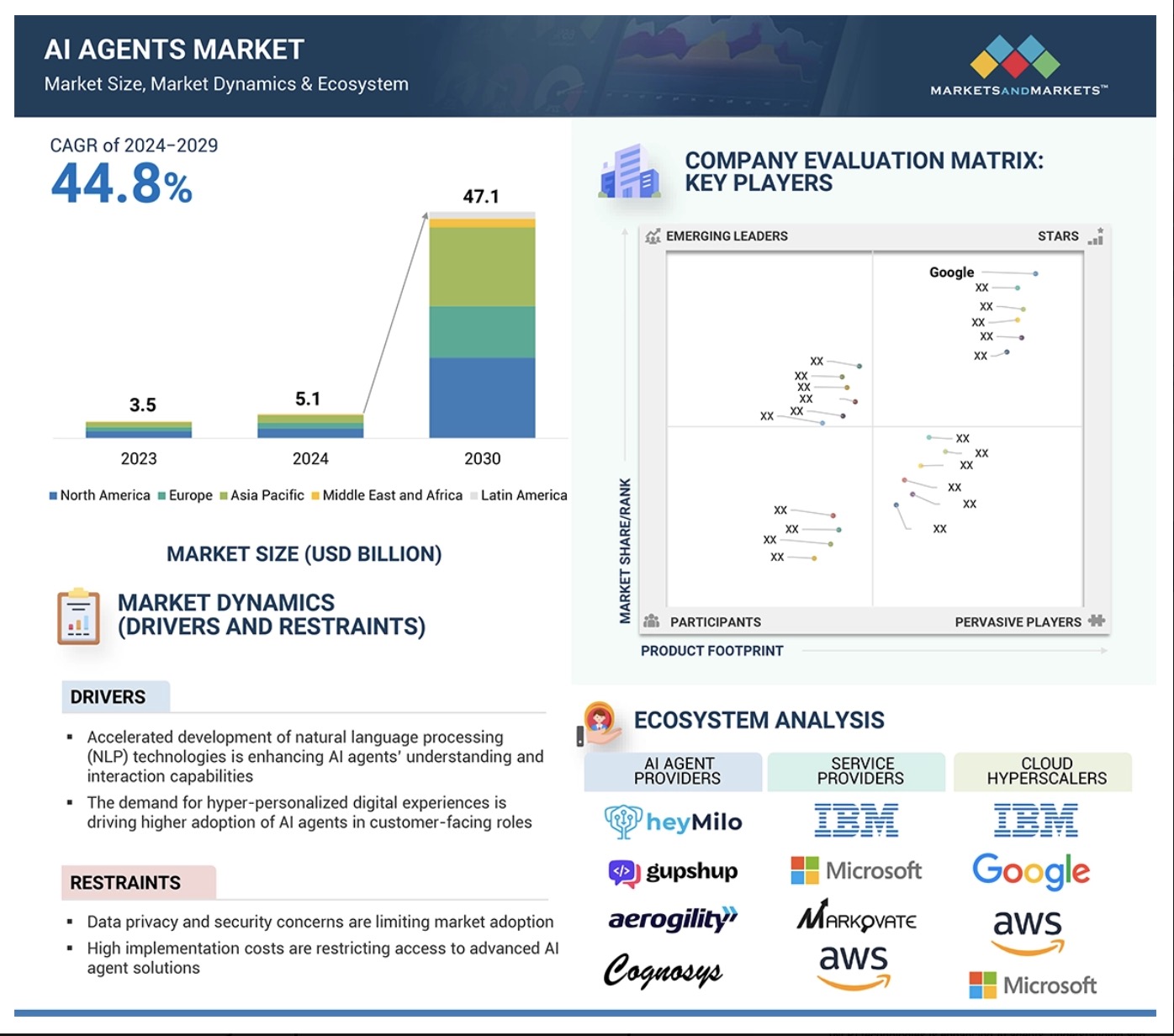
I. Why Are Crypto Payments Ideal for AI? The Mechanistic Basis for Synergy
Crypto payment is emerging as the ideal execution layer for AI systems due to their inherent operational synergy. Compared to traditional payment methods, crypto offers greater automation, execution freedom, and real-time responsiveness—making it foundational infrastructure for smart agents.
- Native Automation: AI can generate and control wallets to initiate payments, grant authorizations, and perform transactions—effectively treating the machine as a user.
- Transparency and Traceability: On-chain transactions are publicly verifiable, creating a solid anchor for AI interpretability.
- Multichain Compatibility and Micropayments: Crypto systems support high-frequency, low-value transactions and allow AI to analyze behavioral data in real time, creating a feedback loop that enhances decision-making.
In short, crypto payments are not just AI’s execution tool but an essential part of its operational strategy and incentive logic—paving the way for new product and business model innovation.
II. Case Studies
2.1 Crossmint, A Web3 Infrastructure Enabling AI-Powered Payments
Project Overview (https://x.com/crossmint)
Crossmint is a leading Web3 infrastructure provider offering a powerful, integrated crypto payment toolkit for businesses and developers. It enables AI agents to perform economically meaningful actions by supporting one-click wallet generation, contract calls, automated transactions, and compatibility with Ethereum, Polygon, Solana, and other networks.
A standout feature is its dynamic multichain switching. During periods of Ethereum congestion, Crossmint monitors gas fees and confirmation speeds across networks and automatically routes transactions to more efficient chains like Polygon. This seamless process requires no user intervention and significantly enhances transaction speed and reliability.
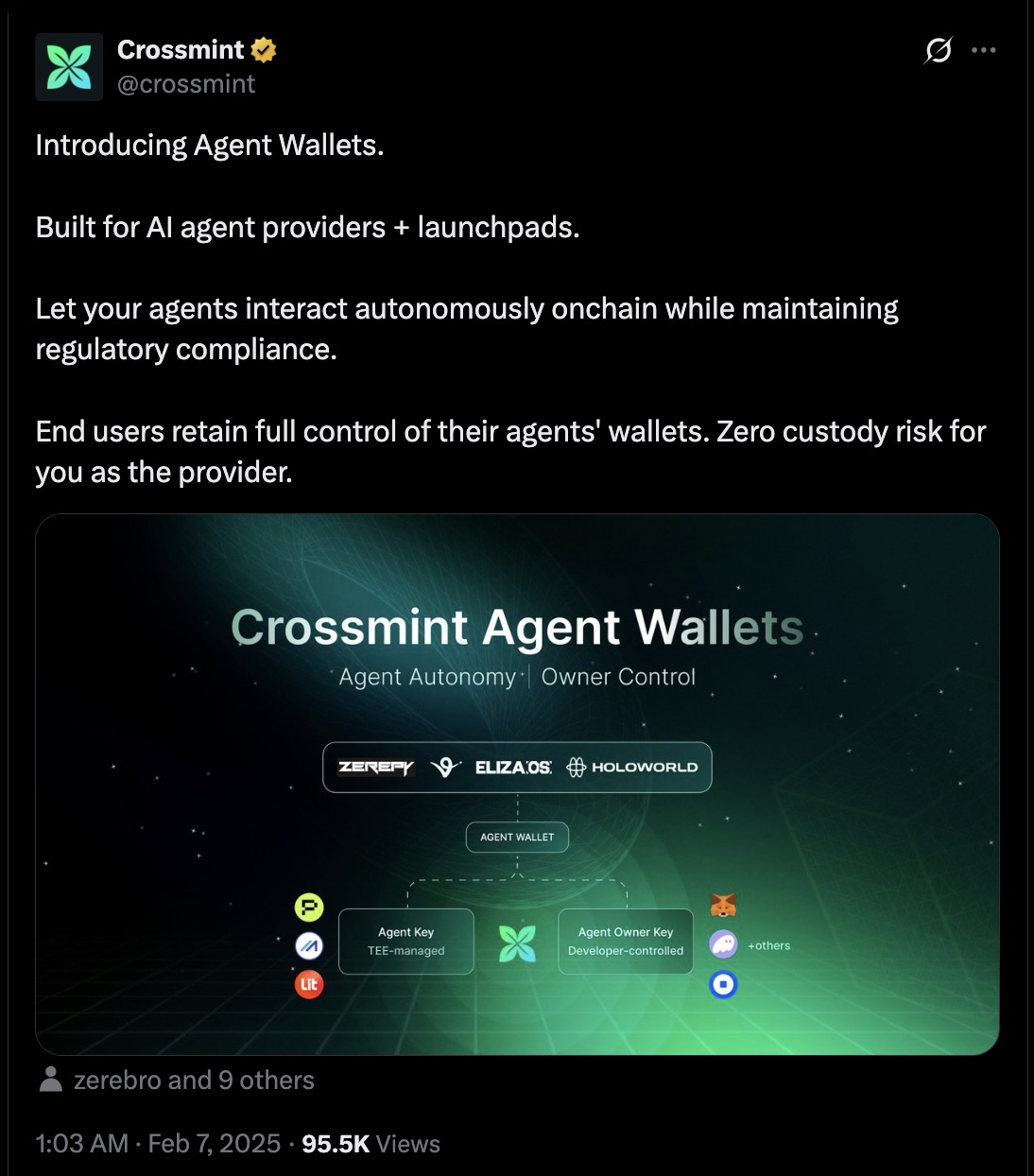
Crossmint has demonstrated notable success in advancing the integration of crypto payments with AI. The following case study—its collaboration with Boba Guys—illustrates this progress in a real-world retail scenario.
2.1.1 Case: Boba Guys + Crossmint – AI-Driven On-Chain Loyalty Program
Overview
Boba Guys, a popular U.S.-based bubble tea brand, faced challenges integrating traditional payment with user incentive systems. Partnering with Crossmint, it built an AI-powered on-chain loyalty program on Solana, merging crypto payments with behavioral data to digitally transform retail operations. The system automated wallet creation, supported seamless transactions, and enabled AI-driven personalized marketing based on user behavior.

Core Pain Points
- Disjointed payment and loyalty programs, failing to leverage crypto incentives.
- Lack of AI for smart analysis of payment data and user behavior.
Crossmint’s Solution
- Crypto Payment Integration
- Auto-generated wallets on sign-up
- Gas-fee-free transactions with real-time on-chain receipts
- Multi-chain support (Ethereum, Polygon, etc.)
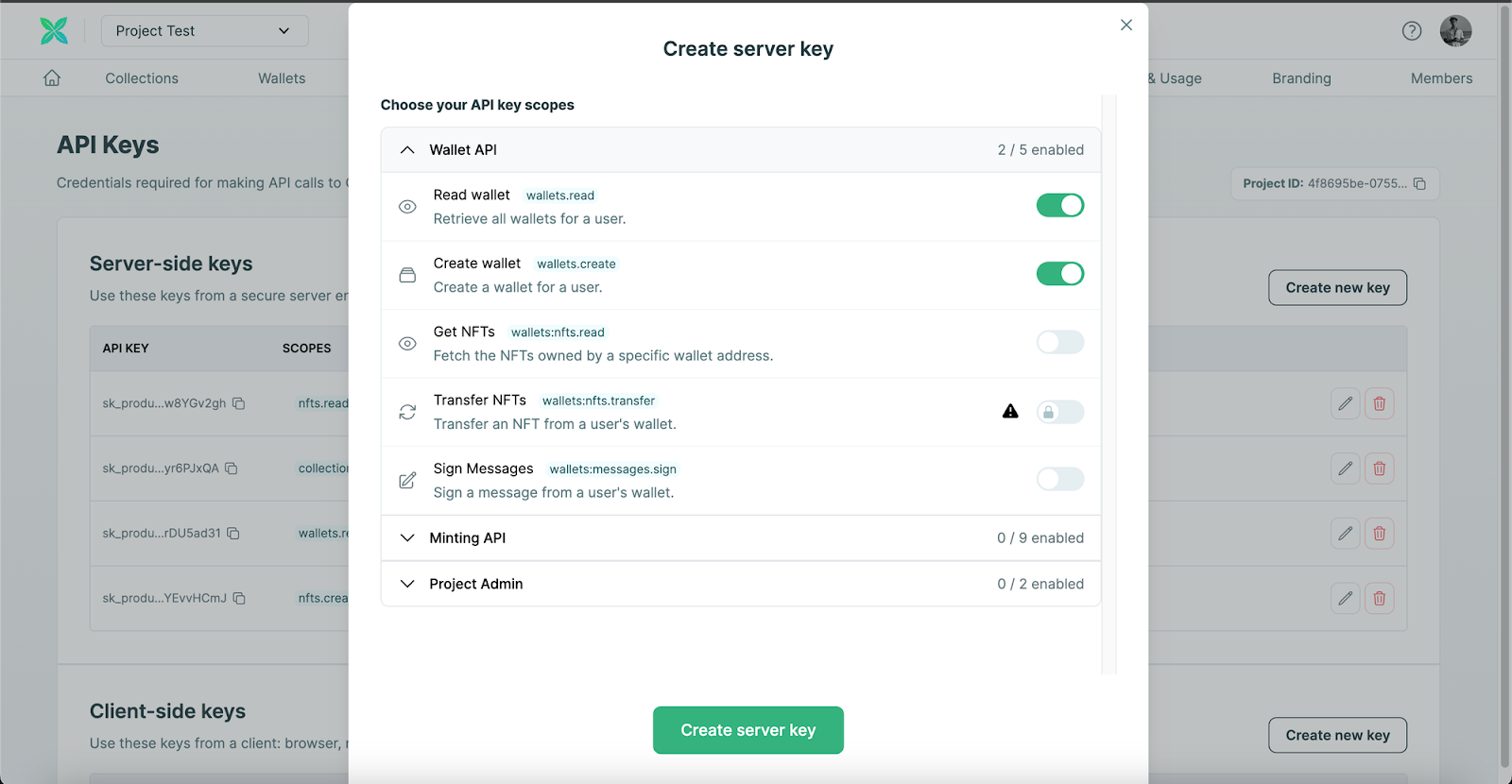
- AI Capabilities
- Behavioral analysis: AI profiles users based on payment history, frequency, etc.
- Smart recommendations: Targeted promotions (e.g., discounts for frequent buyers).
- Dynamic rewards: Adjusts points or offers retention incentives.
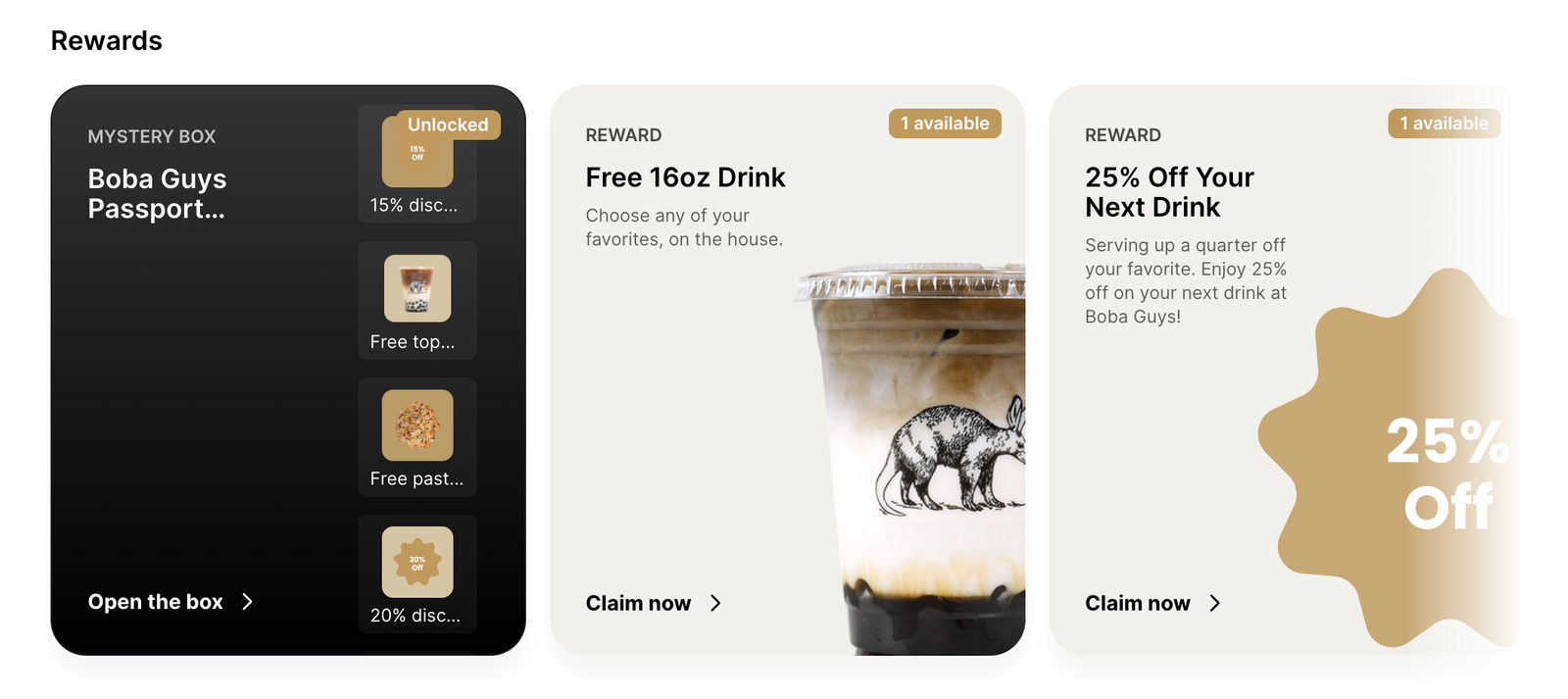
Impact
- Over 15,000 members joined within 3 months
- Loyalty members visited stores 244% more often than non-members
- Loyalty members spent 3.5× more than non-members
Industry Insight
This case pioneered a new retail paradigm: “crypto payments as user incentives”. By tokenizing consumer behavior into transferable on-chain assets (e.g., NFT rewards), Boba Guys not only drove repeat purchases but created a decentralized membership ecosystem.
Crossmint’s AI technology acts as a data hub, streamlining on-chain payment analysis and reducing operational costs through automation. This creates a replicable model for retail and F&B to upgrade offline experiences with crypto payments and AI-driven incentive systems.
2.2 AEON: AI-Native Crypto Payment Protocol
Project Overview (https://x.com/AEON_Community)
AEON is a crypto payment protocol tailored for AI agents, offering a cross-chain, highly available execution layer. Unlike conventional systems, AEON serves as an embeddable payment interface for automated agents, smart contracts, and Web3 apps. Since its late-2024 launch, AEON has expanded across ecosystems including BNB Chain, Solana, TON, TRON, and Stellar.
2.2.1 AI-Powered Execution Logic
AEON emphasizes direct payment execution by AI, enabling agents to autonomously complete real-world transactions (e.g., “book a flight,” “buy coffee”) using natural language commands. Through AEON APIs, AI agents can detect intent, choose assets, perform cross-chain swaps, and settle payments autonomously.
Core Components
- Know-Your-Action (KYA): A verification model ensures agents understand tasks and possess payment permissions—preventing errors or malicious activity.
- Multichain Smart Routing: Optimizes gas fees and latency by selecting the most efficient chain.
This model elevates AI agents from passive processors to active commercial actors, enhancing automation and coordination in Web3.
2.2.2 Real-World Integration
AEON’s “AI Payment as IT Foundation” roadmap supports diverse applications:
- Offline Integration: Deployed QR code systems in Southeast Asia, allowing agents to complete scanning, swapping, and payment autonomously.
- Token Ecosystem Support: Now accepted by 10,000+ merchants across electronics, services, and digital goods.
- Agent-to-Agent Coordination: Enables modular agent collaboration—e.g., one agent generates the order, another executes payment.
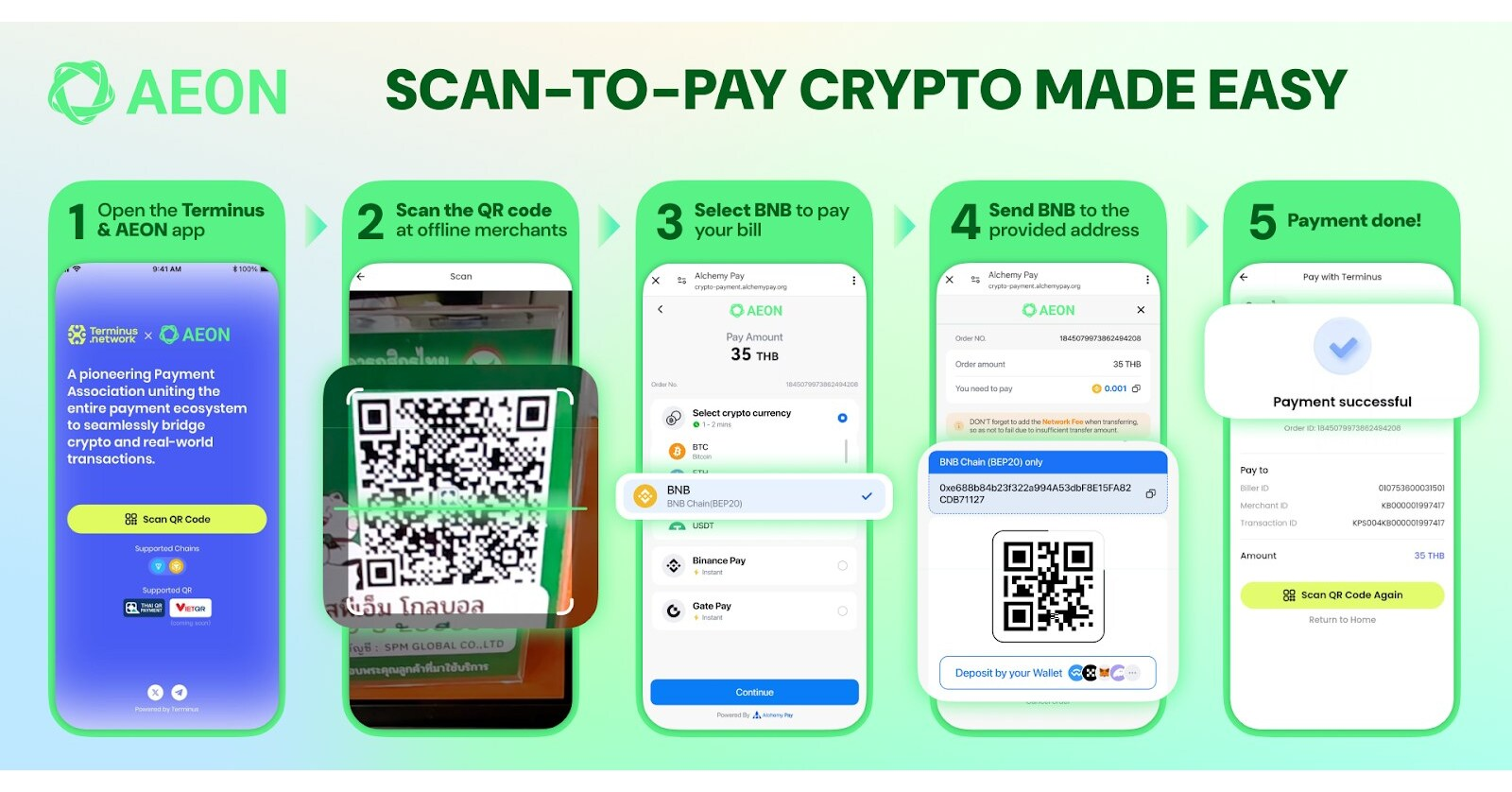
2.2.3 Process Diagrams
The following two diagrams illustrate how AEON Pay operates in real-world use cases, focusing on the AI agent’s payment execution path and the technical interaction details.
Figure 1: Standard Workflow of an AI Agent Invoking AEON Pay

After receiving a user command, the AI agent parses the intent and initiates a payment request via the AEON Pay SDK or API. The system then executes the transaction on-chain and returns the result to both the user and the agent, completing the feedback loop.
Figure 2: Sequence Diagram of Interaction Between AI Agent and AEON Pay
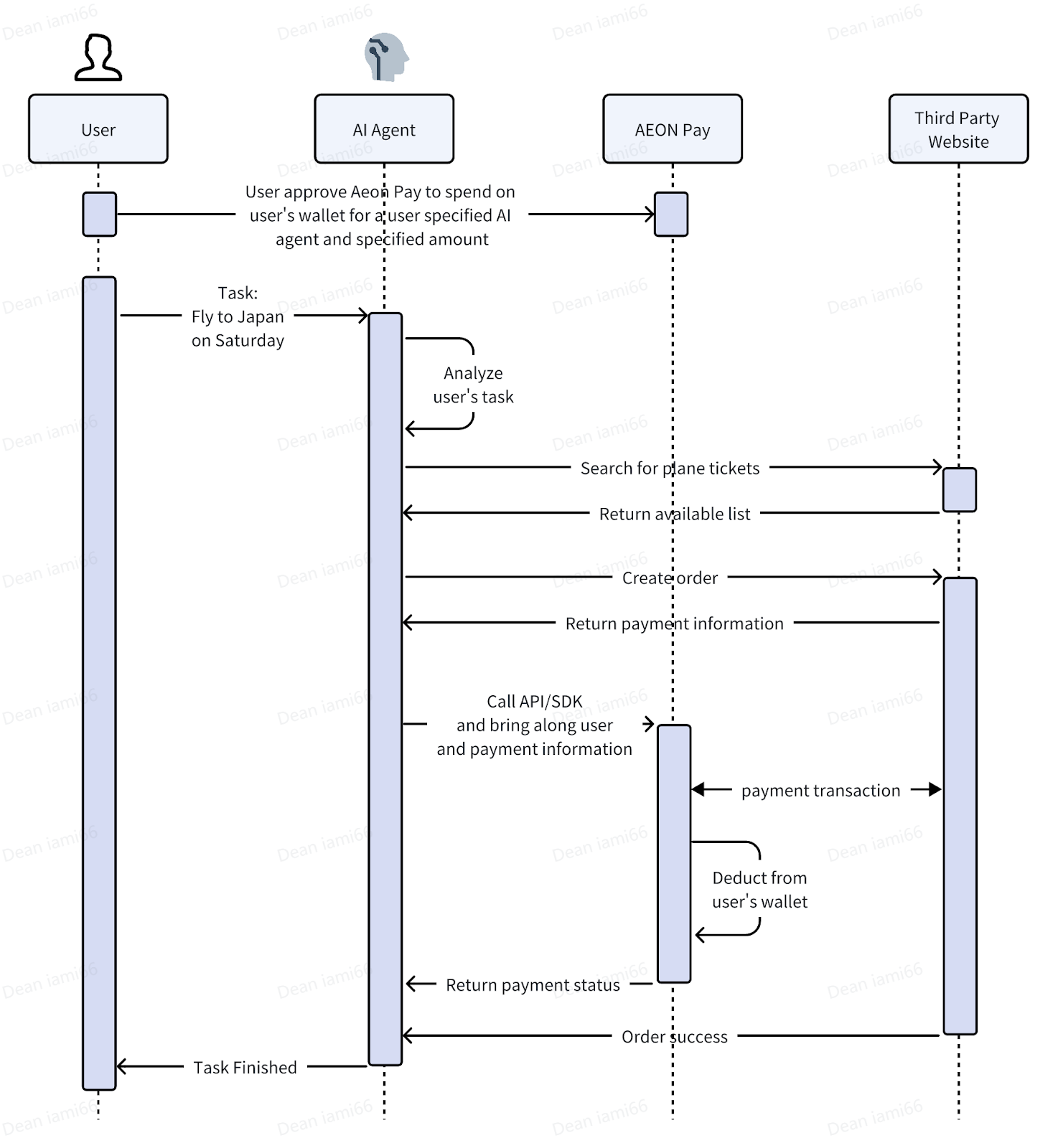
This diagram depicts the full interaction chain: User → AI → AEON → Merchant. Starting with a natural language command, the process involves agent analysis, order creation, payment confirmation, on-chain deduction, and status feedback—ultimately enabling end-to-end automated payment execution.
Future Outlook
AEON sets a new standard for AI agent-to-payment protocols. By abstracting payments as services, it allows intelligent agents to invoke them on demand. In the future, AEON plans to extend to Visa/Mastercard-supported systems, building a seamless bridge between crypto-native users and real-world transactions.
2.3 Gaia Network + MoonPay: Enabling End-to-End AI Payment Solutions
2.3.1 Partnership Context
MoonPay is a global leader in crypto payments, offering instant fiat-to-crypto exchange across 180+ countries and processing over $15 billion annually. Gaia is a decentralized AI agent network enabling developers to build, deploy, and monetize AI agents. Its flagship product, Mother DAO, serves as an Ethereum-native AI agent launcher.
2.3.2 Synergies and Integration
Deep Collaboration Between Payments and AI Agents
- Automated Workflows: Natural language prompts like “buy $100 worth of ETH” trigger Gaia agents to use MoonPay APIs for conversion and on-chain transfer.
- Smart Pricing: Gaia adjusts pricing based on market data; MoonPay completes real-time settlement in assets like USDC or ETH.
Developer Enablement
- Low-Code Integration: MoonPay’s plug-and-play modules allow Gaia developers to quickly add payment functions via API.
- Cross-Chain Flexibility: MoonPay’s multichain support extends Gaia’s use cases (e.g., high-frequency trading on Solana).
Enhanced User Experience
- Simplified Fiat Access: Non-crypto users can purchase agent services directly using fiat.
- Transparency: All transactions are traceable on-chain.
2.3.3 Market Impact
- User Growth: Gaia’s fully autonomous hackathon in 2024 attracted 2,000+ developers; Mother DAO now exceeds 50,000 MAUs.
- Transaction Volume: Helio processed over $1.5B prior to acquisition; MoonPay-Gaia integration is projected to boost on-chain efficiency by 30%.
- Regulatory Milestone: MoonPay became one of the first firms licensed under Europe’s MiCA regulation in December 2024.
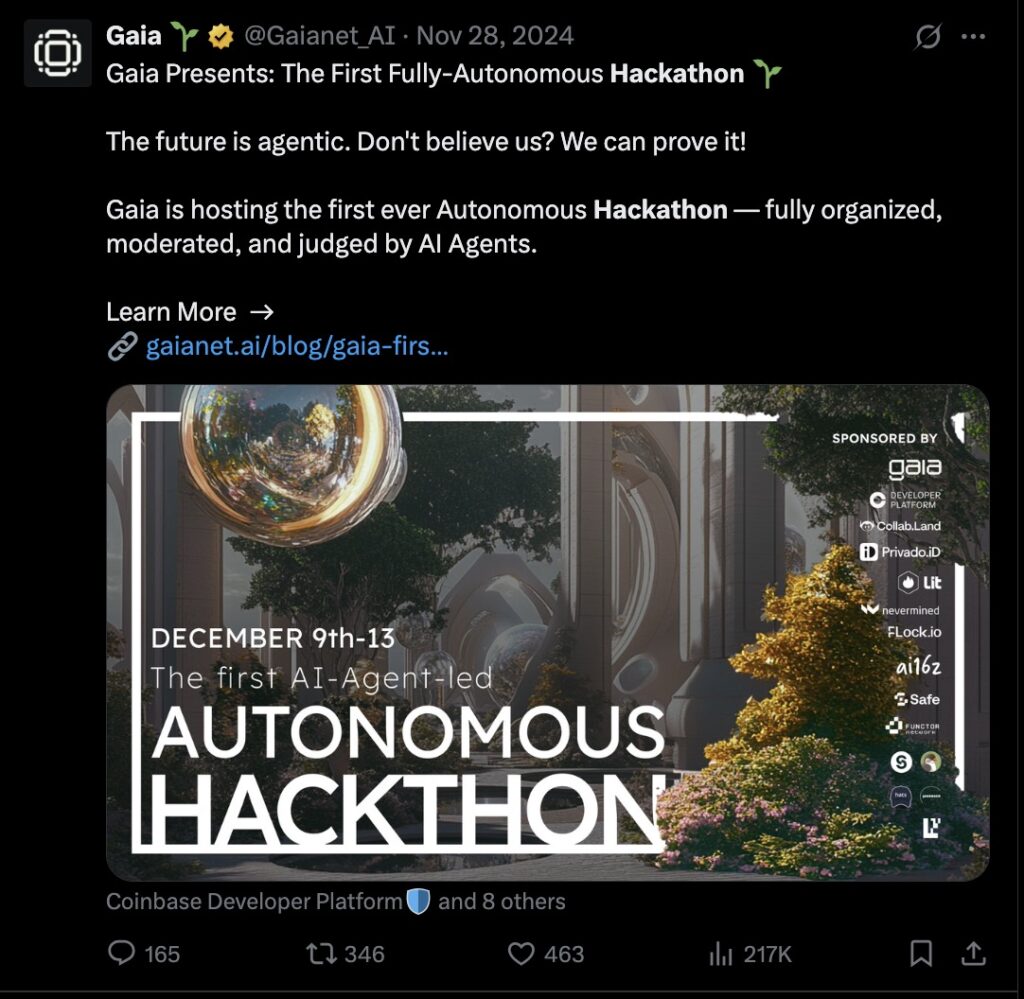

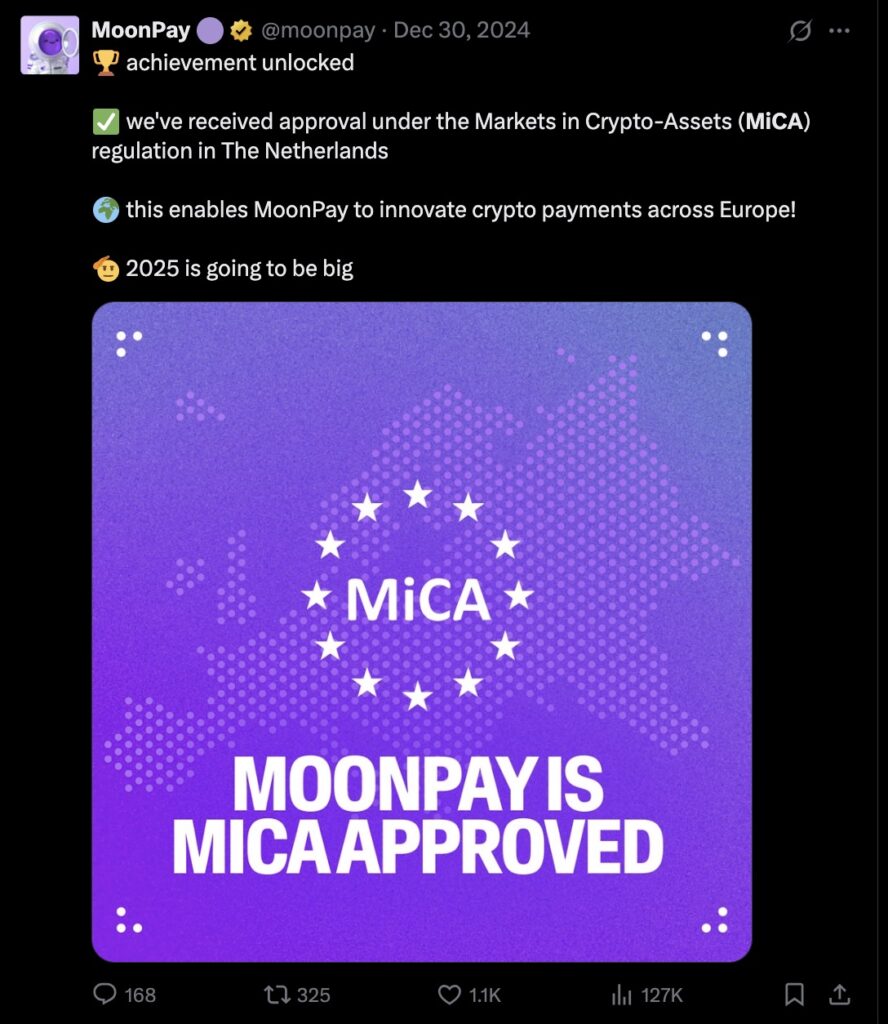
This partnership marks a new phase in the convergence of crypto payments and AI, offering an end-to-end infrastructure for agent creation, deployment, and monetization—despite challenges in complexity and compliance.
III. Industry Challenges and Future Outlook
3.1 Core Challenges
- Technical Complexity: Multichain orchestration and AI optimization remain hurdles.
- Regulatory Uncertainty: Varying national frameworks (e.g., MiCA vs. SEC) challenge innovation.
- User Education: Concepts like wallets and smart contracts still present onboarding barriers for non-crypto users.
3.2 Future Trends
- Lightweight Use Cases: Focus on high-frequency, low-value scenarios (e.g., memberships, game items) to drive stickiness (e.g., Boba Guys model applied to gyms or convenience stores).
- Infrastructure Standardization: Cross-platform API compatibility (e.g., Crossmint + MoonPay) will lower integration costs and form a unified “payment-agent-data” stack.
- AI in RegTech: AI-driven compliance tools (e.g., sanctions detection, AML) will help balance innovation and oversight.
IV. Conclusion
The fusion of crypto payments and AI is not just technological layering—it represents a rethinking of value flow, data processing, and user incentives. From Crossmint’s loyalty revolution to Gaia and MoonPay’s global infrastructure, the case studies show that the convergence of decentralized trust (blockchain) and intelligent decision-making (AI) can push digital transformation beyond efficiency into a new era of automation, personalization, and globalization.
As technology matures and regulation catches up, this integration could become the core engine driving Web3’s mass adoption, ushering in a new era of the intelligent payment economy.
发表回复